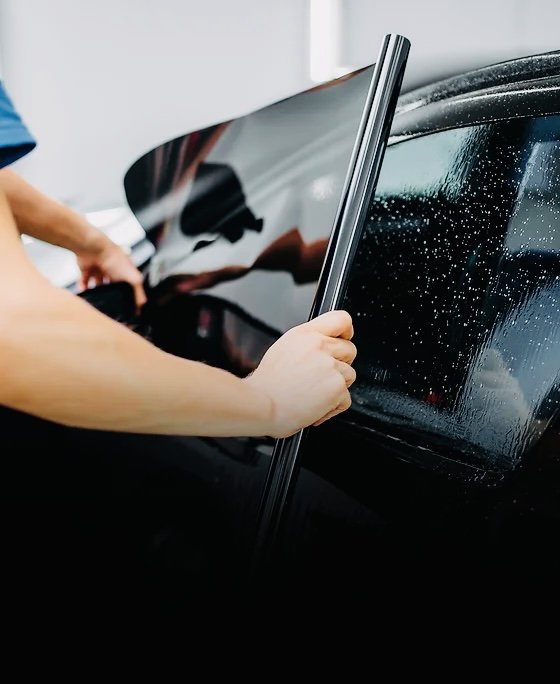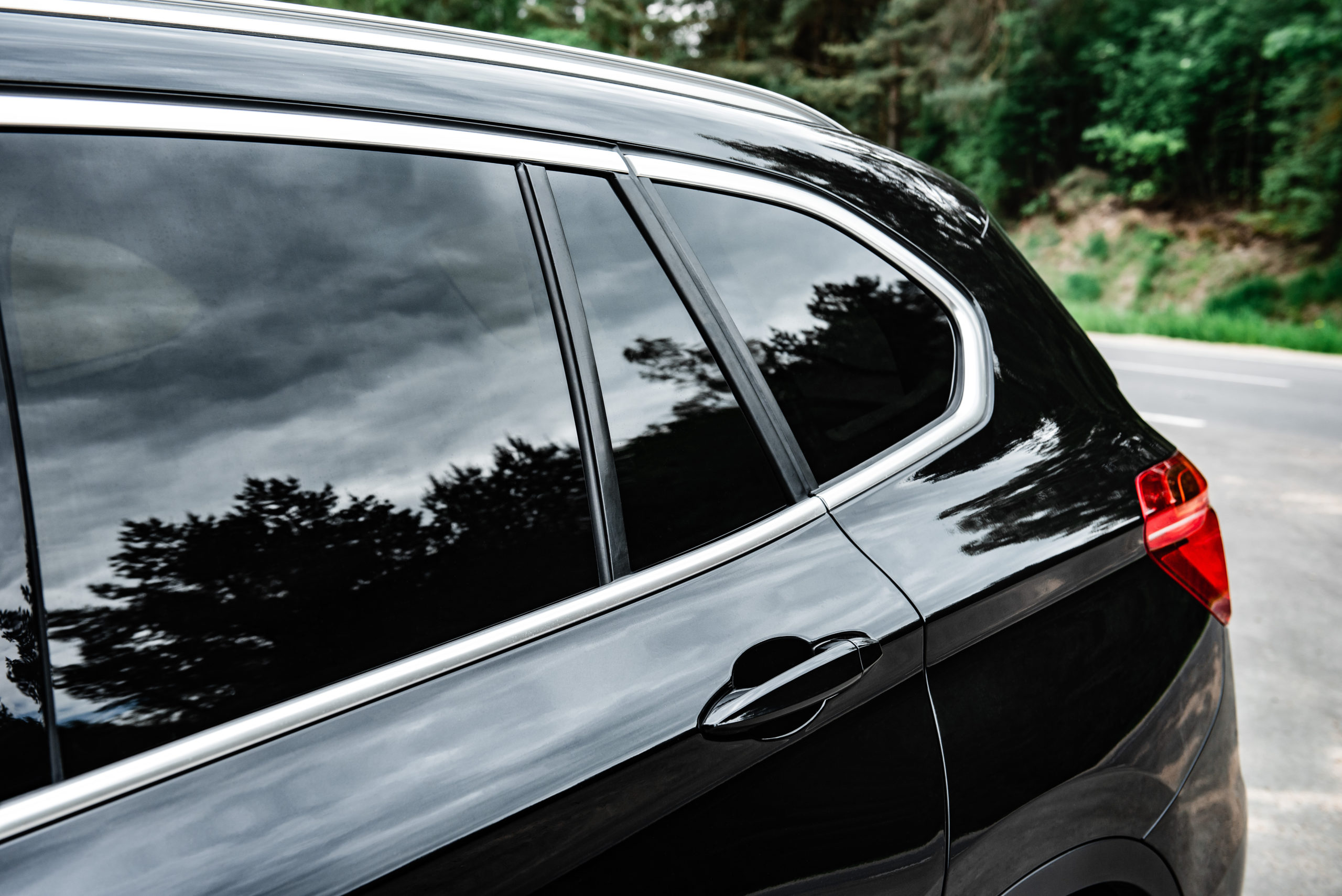Why Window Tinting Is the Best Solution for UV Protection and Glare Reduction
Why Window Tinting Is the Best Solution for UV Protection and Glare Reduction
Blog Article
Home Window Tinting Rules: What You Need to Know Before Tinting Your Auto
Understanding window tinting legislations is important for any lorry owner considering tinting their automobile. Rules differ substantially from one state to another, establishing certain limits for Visible Light Transmission (VLT) portions, particularly for front-side windows and windscreens. Failing to abide by these laws can lead to fines, the necessity to eliminate the color, and problems with insurance coverage. As you ponder boosting your car's look and capability, it is essential to comprehend not just the lawful implications yet also the functional considerations that include picking the right tint. What variables should you focus on in your decision-making process?
Value of Understanding Color Regulations
Recognizing window tinting regulations is critical for vehicle owners to make sure conformity with state laws. These regulations dictate the acceptable levels of tint darkness and reflectivity, which can substantially vary from one jurisdiction to one more. Failing to adhere to these policies can result in fines, mandatory elimination of the color, and prospective problems during lorry assessments.
Additionally, recognizing these laws assists car owners make notified decisions concerning their tinting options. Different sorts of home window movies supply different advantages, such as UV security, warmth being rejected, and glow reduction. Without understanding of the legal limitations, automobile owners risk picking products that might inevitably lead to lawful problems.
In addition, awareness of tinting regulations cultivates a more secure driving setting. window tinting. Exceedingly dark tints can hinder exposure, increasing the risk of accidents, specifically in the evening or in adverse weather condition problems. Law enforcement firms additionally make use of these regulations to ensure roadway security, making compliance not just a personal obligation but a lawful commitment
State-Specific Color Rules
Each state in the united state has actually developed its own particular guidelines regarding home window tinting, reflecting a varied variety of standards and requirements. These laws can differ considerably, impacting just how lorry owners come close to installment and compliance. For circumstances, some states allow darker tints on back home windows while enforcing stringent restrictions on front-side home windows.
Additionally, guidelines commonly specify allowable tint materials and shades. Particular states restrict reflective colors completely, while others may enable them to a minimal level. Additionally, some jurisdictions mandate that vehicles with tinted windows show a sticker indicating conformity with state laws, offering a clear recognition for law enforcement.
Enforcement of these legislations additionally differs; some states are much more positive, carrying out arbitrary checks, while others depend on complaints or noticeable offenses to launch enforcement. Lorry proprietors ought to know that failing to abide by state-specific tint policies can lead to penalties, required removal of unlawful colors, or both.

Legal Color Percentages
Establishing the lawful color percents is vital for automobile owners seeking to adhere to state policies. Each state has particular regulations governing just how much light has to pass via the home windows of an automobile, which is revealed as a portion known as Noticeable Light Transmission (VLT) website here This percent differs considerably across states and can depend upon the sort of window-- front side, back side, and windscreen.
For instance, some states enable as little as 20% VLT on front side windows, while others might allow up to 50%. Windshield tinting is often extra restricted, with lots of territories allowing just a slim band of tint at the top of the windshield. On the other hand, back windows commonly have much more lenient guidelines, with some states permitting darker colors.
It is vital for automobile owners to acquaint themselves with their regional regulations to prevent prospective legal problems. This includes understanding just how VLT is gauged, as it can vary based upon the type of home window film utilized. Staying notified concerning these guidelines guarantees conformity and promotes secure driving problems for both the automobile owner and others on the road.
Effects of Non-Compliance
Stopping working to abide by window tinting laws can lead to considerable effects for vehicle owners. The most immediate effect is the capacity for website traffic stops and citations from police. Policemans educated to recognize unlawful color levels might provide fines, which can differ by jurisdiction yet commonly range from modest to significant amounts. Repeated infractions might bring about increased fines, including higher penalties or added factors on a motorist's certificate.

Insurance provider may additionally enforce fines for non-compliance, as illegal adjustments can be considered as a violation of plan terms. This Source might influence coverage prices or result in problems in insurance claims if an incident takes place.
Eventually, the consequences of non-compliance expand beyond prompt punitive damages; they can affect a vehicle driver's insurance policy prices, legal standing, and general lorry worth, stressing the importance of sticking to neighborhood window tinting guidelines.
Tips for Finding Tinting Options
Recognizing the implications of non-compliance highlights the significance of making notified choices when choosing window tinting alternatives. Familiarize on your own with your state's certain legislations pertaining to color darkness and reflectivity. Each state has special laws that determine the permitted restrictions, so ensure you stay within these guidelines to stay clear of penalties.
Second of all, consider the type of tint product. Alternatives include colored, metalized, and ceramic tints, each offering differing degrees of heat rejection, UV defense, and resilience. For circumstances, ceramic colors supply superior warmth resistance without disrupting digital tools, making them a preferred choice.
Furthermore, analyze your main objective for tinting. Continued If you look for enhanced personal privacy, select darker tints; however, maintain in mind that this may impact visibility in the evening. On the other hand, if glare reduction and UV defense are your major concerns, lighter tints might suffice.
Finally, talk to a professional installer that is experienced concerning regional guidelines and can recommend top notch materials suited to your requirements (window tinting). Taking these variables into account will ensure you make a knowledgeable decision, ultimately improving both your car's looks and functionality
Conclusion
In verdict, familiarity with home window tinting regulations is crucial prior to applying color to a vehicle. By recognizing lawful needs and picking proper color products, lorry proprietors can accomplish visual enhancement while staying certified with pertinent legislations.
Recognizing window tinting legislations is important for any kind of automobile proprietor thinking about tinting their cars and truck.Comprehending home window tinting laws is essential for car owners to guarantee conformity with state policies. Some states allow darker tints on rear home windows while imposing stringent limits on front-side windows.
In contrast, rear windows commonly have a lot more tolerant laws, with some states permitting darker colors. (window tinting)
In final thought, knowledge with home window tinting laws is essential prior to using tint to a car.
Report this page